We may earn revenue from the products available on this page and participate in affiliate programs. Learn More ›
The Henry Homesteader 9mm Carbine is a good reminder that guns are supposed to be fun. We’re awash with serious firearms. Serious long-range rifles. Serious concealed-carry handguns. Serious AR-style carbines kitted out for the next disaster—whether natural or manmade.
If those firearms are like pure-breed dogs, raised to do specific (and serious) jobs, the Henry Homesteader is more of a rescue pup, handsome but of questionable lineage, and an utterly reliable and enjoyable companion to have by your side.
- Chamber: 9mm
- Weight: 6 lb. 10.8 oz. (empty no mag)
- Trigger: 6 lb. 10 oz.
- Length: 35 ¾ in.
- Barrel: 16.37 in., threaded ½-28
- Twist: 1:10
- Stock: Walnut
- Safety: Top-mounted, two-position
- Sights: Fixed front post, adjustable rear aperture
- Receiver: Tapped and drilled for Weaver 63B mount
- Price: $928
Henry Homesteader Variants
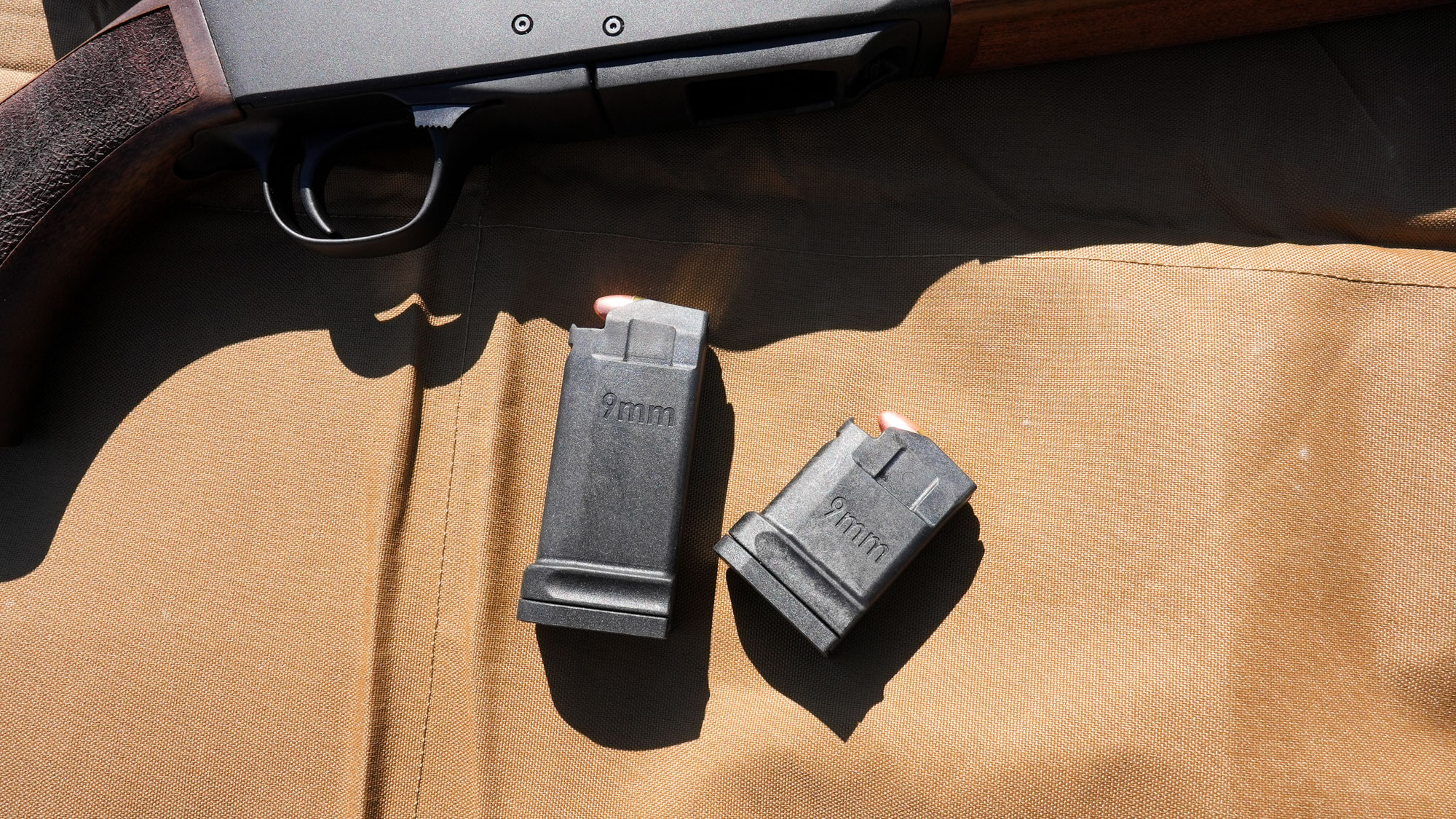
Like many pistol-caliber carbines (aka PCCs), the Henry Homesteader is designed to be compatible with popular semi auto handgun magazines. Specifically, the Homesteader comes in three versions that can run Glock, Sig Sauer, or Smith & Wesson magazines. I’m not sure what percentage of the gun-owning public has one of these blasters in their collection, but it is a significant number.
Each version runs its own adapter in the magazine well and you can purchase additional adapters to run the full gamut of those mags if you want. Being able to run your pistol’s magazines in a carbine is a handy feature and is one of the Homesteader’s many appealing qualities.
Henry Homesteader Aesthetics

The Homesteader is a departure from Henry’s line of lever-actions and single-shots. In terms of looks, it reminds me of some of the BB guns I carried in the woods around my house when I was young. The blocky fore-end, thin contour barrel, and fixed front sight contribute to the effect.
The stock is made of American walnut and the wood on my sample had some lovely character in its grain. I appreciate that Henry still uses wood on so many of its rifles. It adds warmth and appeal to a firearm in a way that synthetic stocks can’t match.
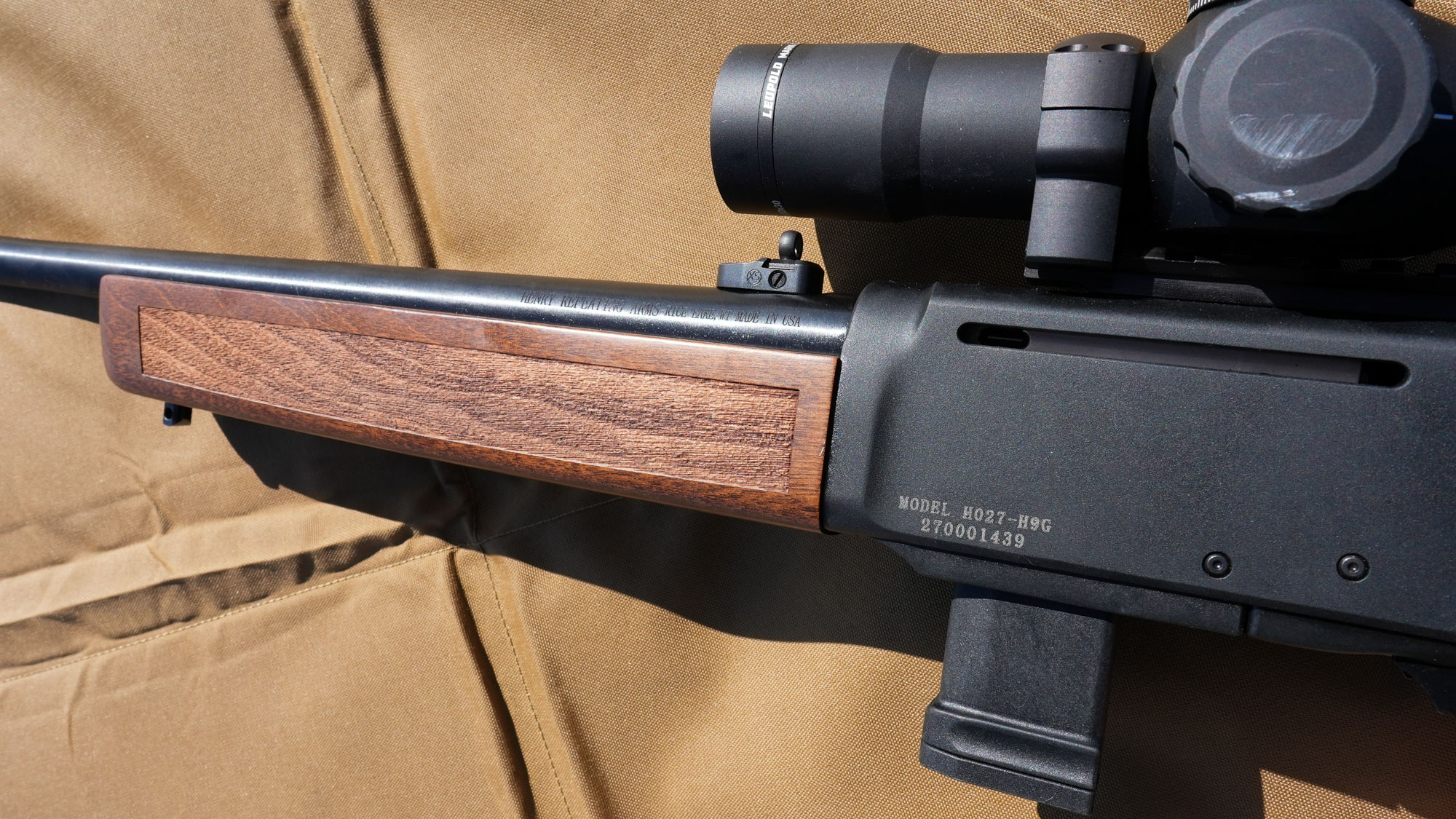
Henry adorned the Homesteader with an interesting texture on the fore-end and grip. I’m not sure how to describe it, other than to say it is a modified stippling pattern with an organic and random look. Personally, I dig it. Not only does it provide ample texture to hold onto the carbine, but it is another design touch that separates the Homesteader from the rest of the pack.
The metal on the receiver is finished in an anodized matte black that is smooth and even. The blued barrel has a bit more shine to it but isn’t flashy. The lettering and other markings on the rifle are cleanly executed in an attractive font. Attention to such details is part of why Henry has been so successful over the last quarter century since the company’s founding.
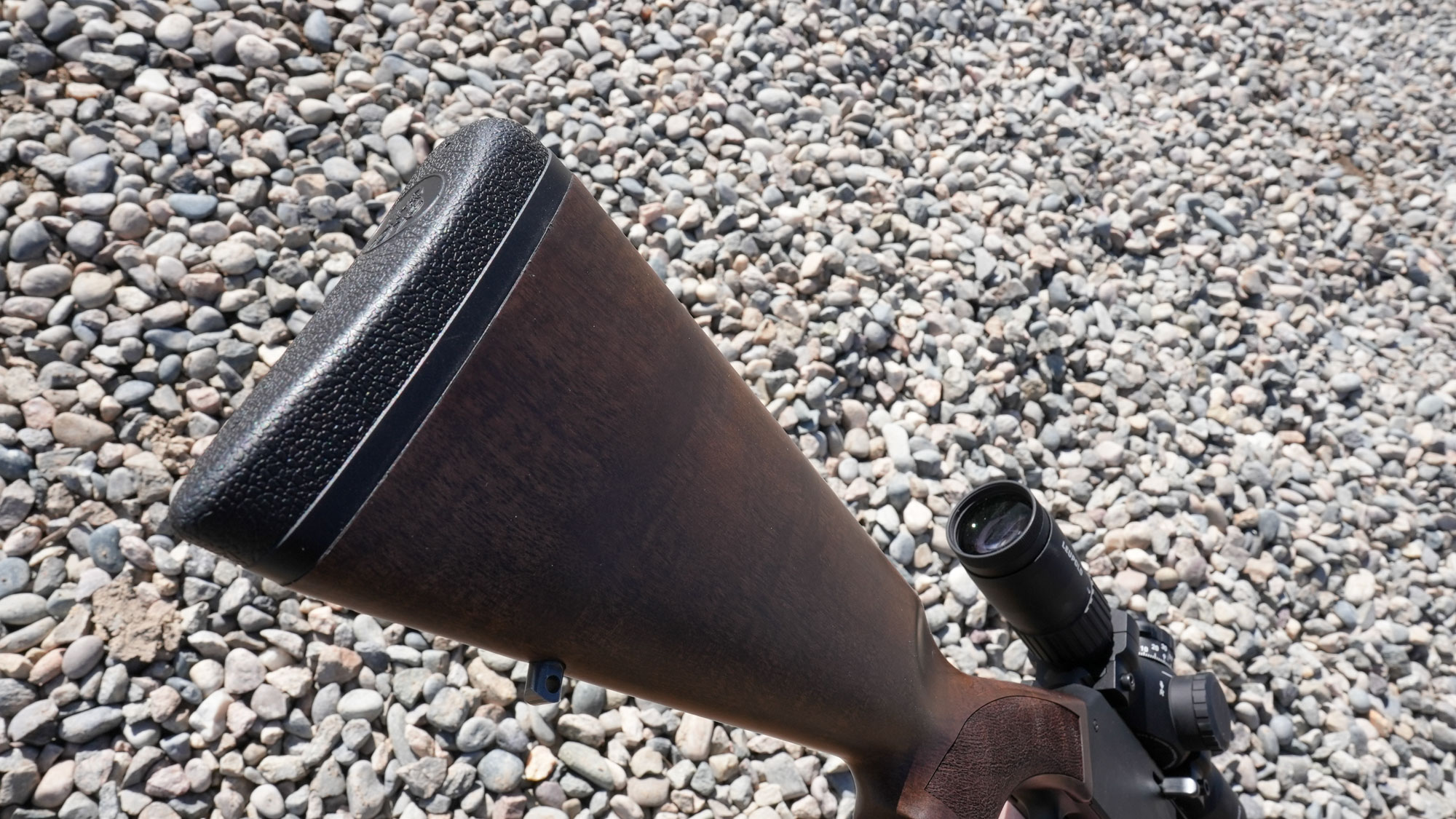
The Homesteader comes with a nice 1-inch recoil pad that’s quite cushy. While it is exactly what I’d want on one of Henry’s .45/70s it is more than what’s needed for even the most recoil-sensitive shooter.
Even with the sportiest 9mm loads I put through the rifle the recoil wasn’t much. And I found that the recoil pad, which is pretty “grippy,” tended to hang up on loose clothing when shouldering the rifle. I’d rather have a thinner, harder pad with less grip to improve the Homesteader’s handling.
Sights
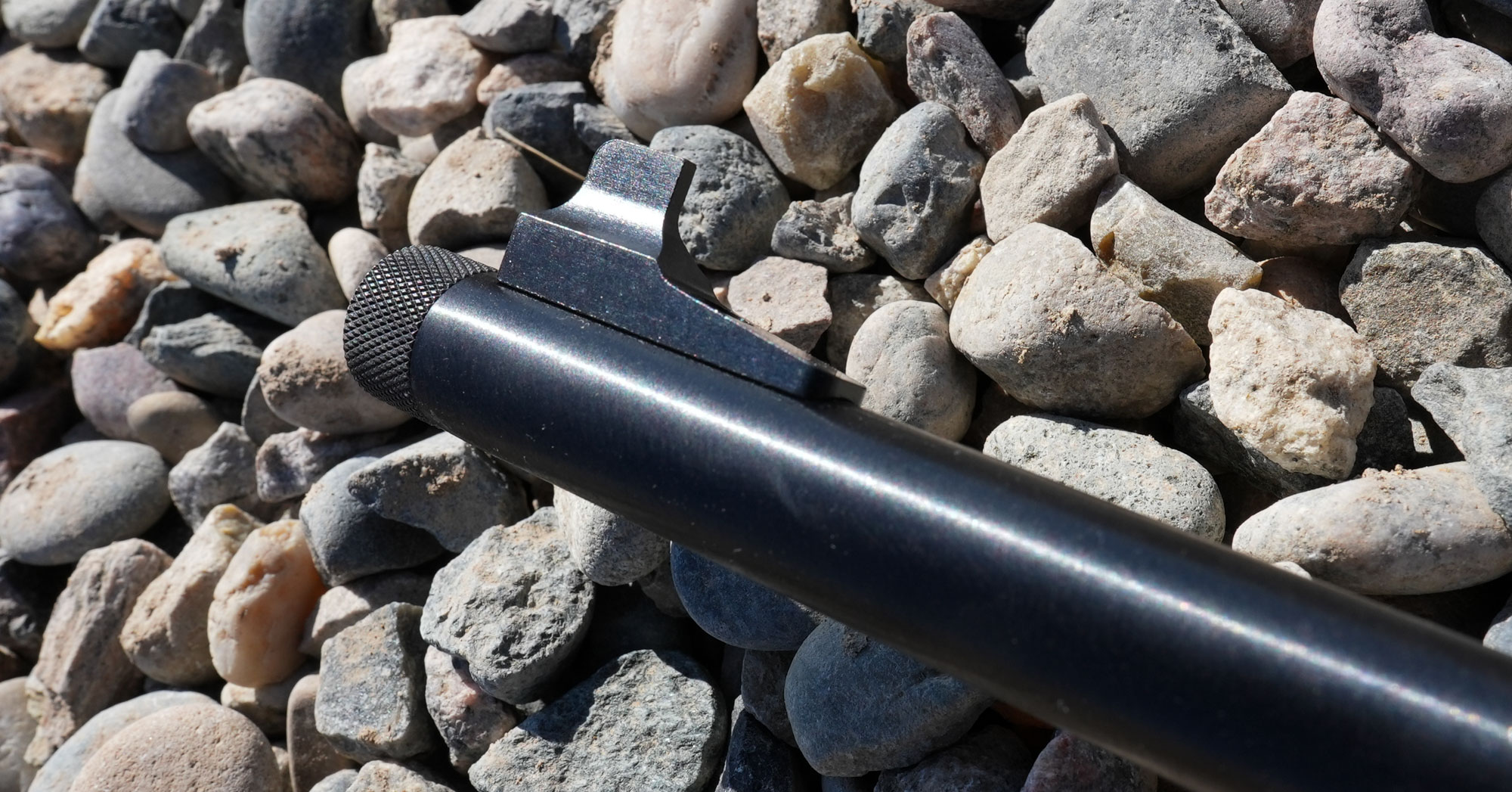
Henry equipped the Homesteader with functional iron sights. The fixed front post, which is a plain black blade, is paired with a large aperture rear sight that can be adjusted for windage and elevation.
This system is fast and reasonably accurate. The eye centers naturally behind the aperture when the Homesteader is shouldered.
The receiver is also tapped and drilled for mounting an optic. The four-screw pattern accepts a Weaver 63B rail, which is what I attached to the carbine. But that’s not the only option. Talley makes rings with integral bases that can mounted as well. This is the cleanest look for attaching a scope.
Henry also offers plates in mounting patterns that accommodate popular reflex sights. Depending on how you plan to employ the Homesteader that can be a smart way to go.
For my purposes, which included gathering accuracy data, I mounted one of Leupold’s new Mark 5 2-10×30 scopes, which is a bit overkill perhaps, but still balanced well with the rifle and looked good.
Running the Henry Homesteader
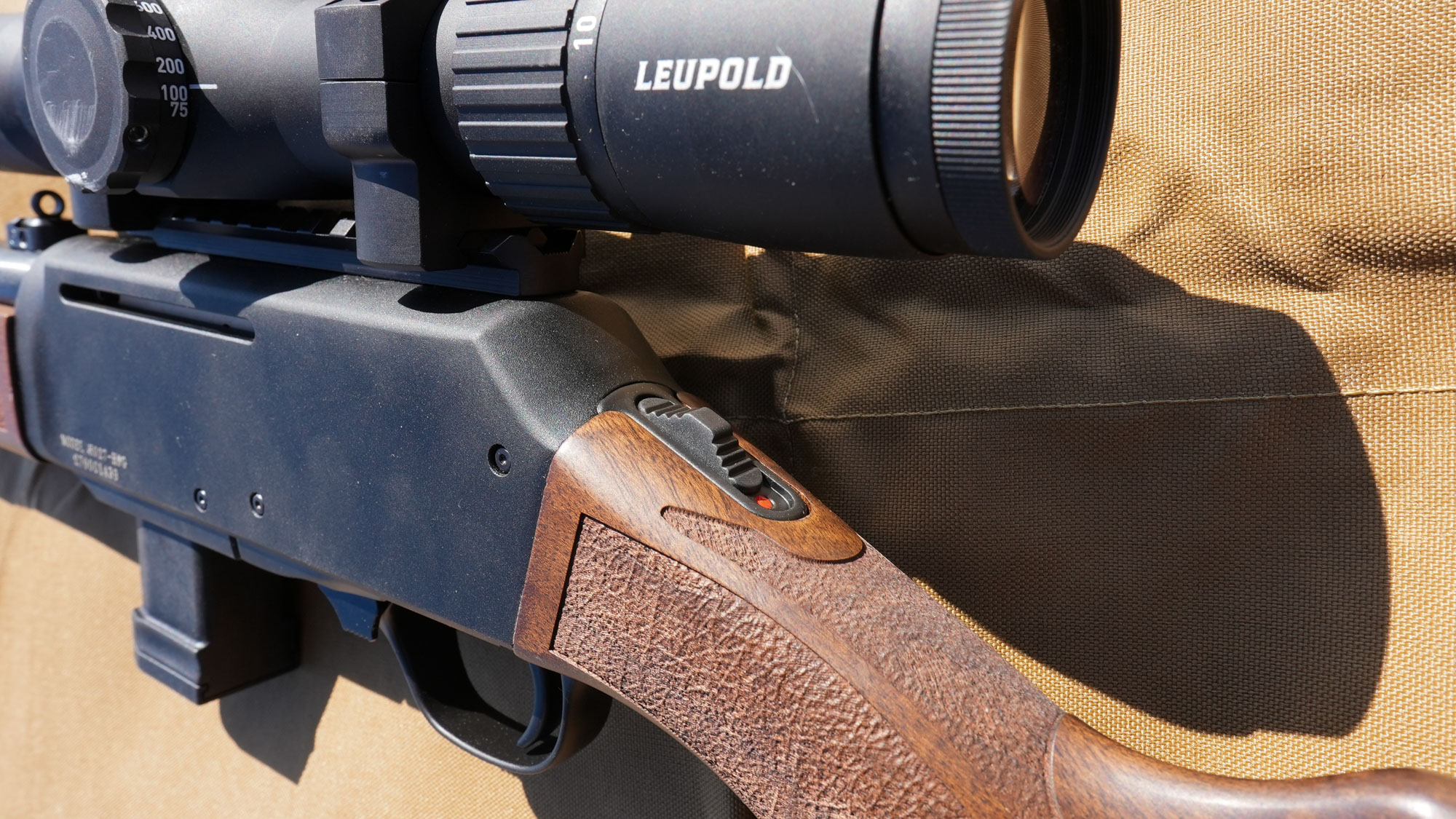
There’s nothing tricky about operating the Homesteader. You seat the magazine in the mag well, rack the bolt to chamber a round, and you’re ready to rock and roll. The rifle has a prominent two-position safety on the top of the stock where the tang would be if the Homesteader had a tang.
The safety sits where the shooter’s thumb can easily find it and toggles back and forth in a smooth, positive manner. When the safety is pushed forward it exposes a red mark that is visible to the shooter when the gun is shouldered and is prominent enough to help others nearby ascertain the rifle’s condition.
Trigger Pull
The trigger on the Homesteader is not fancy—but is functional. The one on my sample has a fair bit of creep and broke with an average pull weight of 6 pounds, 10 ounces. The trigger is a bit irregular. I measured more than a pound of variation in the break weight over the course of 10 readings.
On a precision rifle that performance would induce the vapors. But on a working gun like the Homesteader that is designed to be hauled around in the truck while doing chores it is par for the course.
Feeding, Extraction, and Ejection
So far, I’ve run a couple hundred rounds through the Homesteader using a variety of 9mm loads. That’s included a range of bullet weights (from 115 grains to 147 grains) and bullet styles including FMJ, JHP, flat nosed bullets, and others. The Homesteader digested them all without any glitches.
The Homesteader ships with two magazines, a 5- and a 10-rounder. Mine loaded easily until I got to the last round. I had a heck of a time topping them off. Other than that, they ran great.
The Homesteader has a stout fixed ejector that launched the empties well clear of the ejection port, throwing them about 10 feet to the side and a bit forward of my firing position.
Read Next: Best 9mm Ammo
Ambidextrous Controls
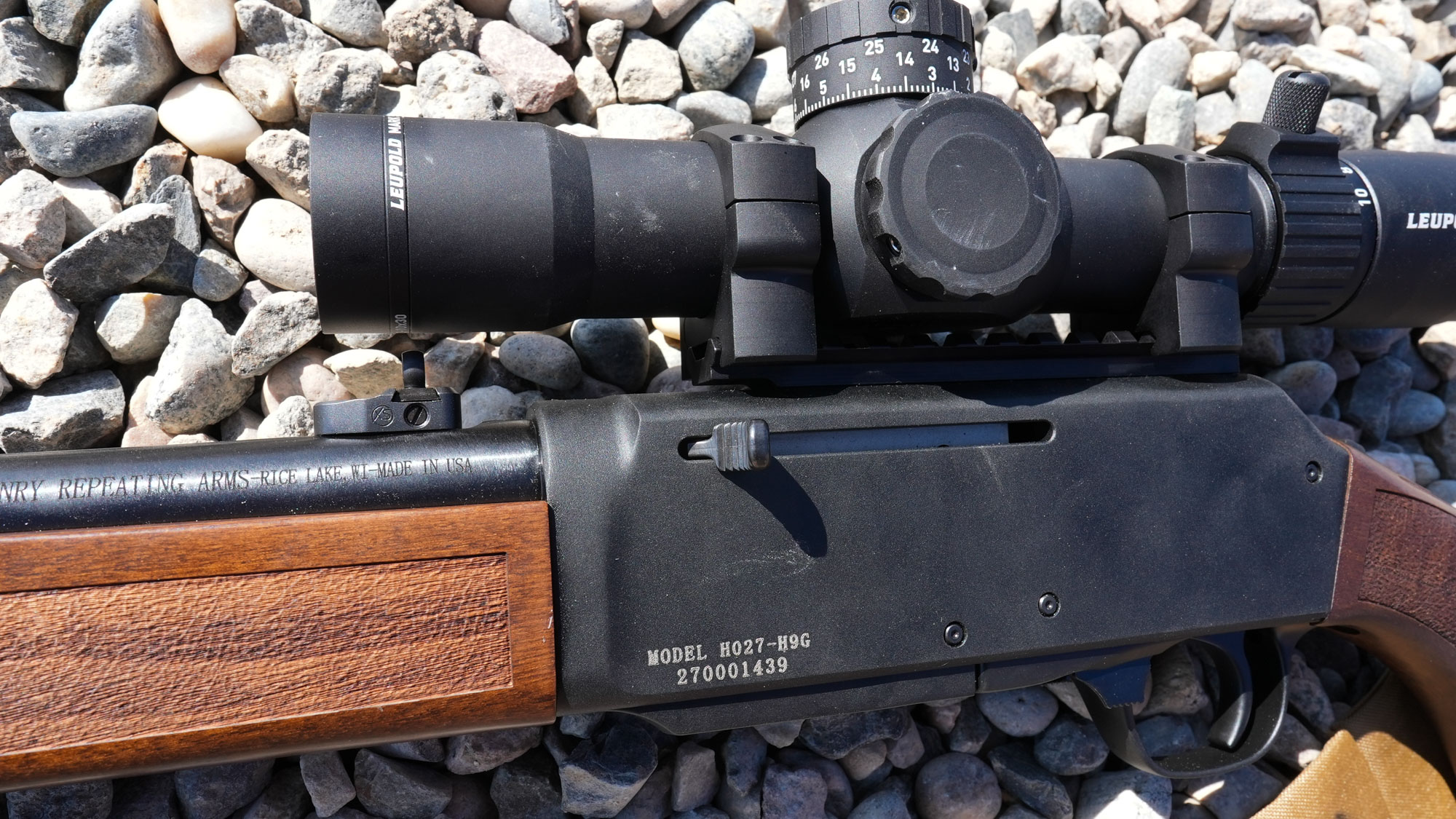
The charging handle on the Henry Homesteader can be swapped from one side of the rifle to the other. It fits into slots located on either side of the bolt and can be removed by grasping it and wiggling it free like pulling a loose tooth.
Henry Homesteader Accuracy
Chambered in 9mm Parabellum, the Henry Homesteader is not a long-range rig. One hundred yards is about all you can expect from it.
At that distance, the Homesteader kept its shots within a 10-inch steel plate with everything I ran through it. With the more accurate loads it grouped about 8 inches at that distance.
50-Yard Accuracy
I did my accuracy testing at 50 yards off a bench while resting the rifle on two support bags, one under the fore-end and the other under the butt stock. At that distance the best ammo—Federal 124-grain HST—printed 5-shot groups that averaged 1.973 inches.
Overall, the average 5-shot group at 50 yards measured 2.230 inches. The largest groups came from the American Eagle 147-grain FMJ, which averaged 2.66 inches at that distance.
If you’re going to use the Homesteader for any type of hunting or varmint control where you might encounter shots beyond 20 yards, you’ll want to sample a variety of loads to see what your carbine likes most.
Point of Impact Shift
As with any PCC, you’ll see significant changes in your point of impact when switching from one load to another. A 147-grain FMJ has very different flight characteristics than a lighter JHP, so this is to be expected.
Velocity Boost
Thanks to the Homesteader’s 16.37-inch barrel, most 9mm rounds get a notable bump in their muzzle velocity when shot out of that longer tube. Here’s what I recorded with a Lab Radar during one of my shooting sessions. Each string was 10 shots.
| Load | Muzzle Velocity (fps) | SD | ES |
| Federal 147-gr. Syntech Solid Core | 1294 | 14.3 | 38 |
| Federal 124-gr. HST Tactical | 1392 | 10.1 | 31 |
| Hornady American Gunner 115-gr. XTP | 1227 | 29.6 | 64 |
| American Eagle 147 gr FMJ | 985 | 36.4 | 125 |
| Winchester PDX1 147-gr. JHP | 975 | 65.7 | 157 |
Practical Accuracy
Away from the bench the Henry Homesteader really comes into its own as a handy, well-balanced shooter. I had the most fun blazing away with it on a pair of 12-inch plates at 100 yards at my local gun range.
The plates are separated by about 50 yards and transitioning from one to the other showcased the Homesteader’s nimble handling. The Henry pivoted between the two in a flash and had no problem putting multiple hits on each as I quickly worked the trigger.
Magazine Swaps
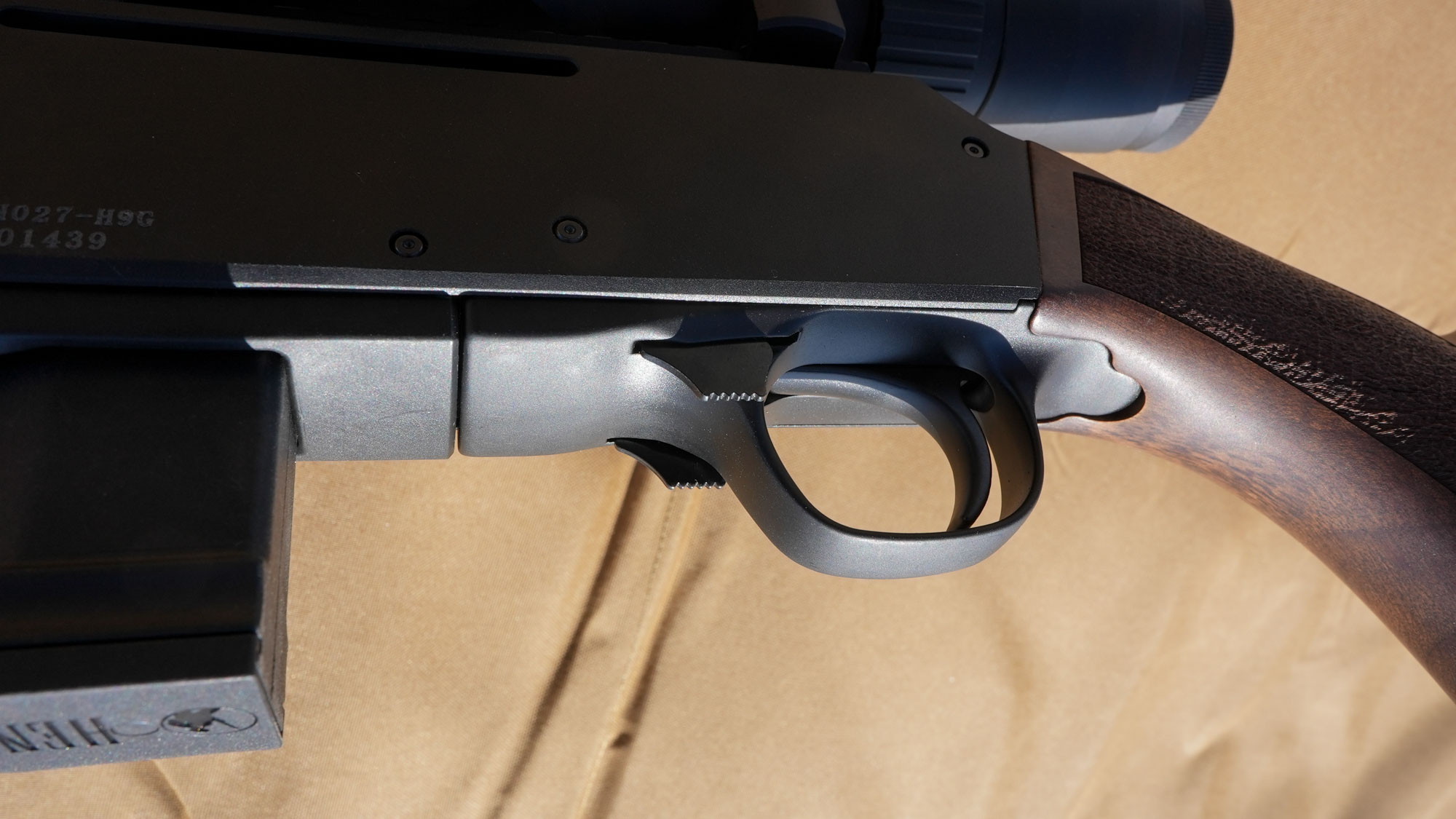
When a magazine runs dry, the follower presses against the mechanism that locks the bolt open. The mag catch is in front of the magazine well and is easy to locate and manipulate. Fresh magazines seat into place without much fuss and lock with a discernible click.
A slight rearward tug on the bolt disengages the bolt lock allowing the bolt to slide home and chamber a round.
To lock the bolt back when there’s no magazine in place simply pull the bolt to the rear and push up on the tabs on either side of the trigger guard.
Read Next: Ruger PC Charger Review
What the Henry Homesteader Does Well
Right at the top of this list is the Homesteader’s ability to turn gunpowder into smiles. This is a remarkably fun gun to shoot and is a great way to improve one’s practical field marksmanship, especially now that 9mm ammo is more plentiful.
Henry bills the Homesteader for small game hunting, and it can certainly work in that role. With a bit of testing to find an expanding bullet that delivers reasonable accuracy it would do fine on rabbits and other wee critters. It could also serve well for personal defense, particularly when paired with a handgun that uses magazines that it can take.
The Homesteader also deserves credit for its ergonomics and for how easy it is to run, as well as for its distinctive lines.
What It Could Do Better
The lovely handling characteristics of the Homesteader would be even better if it had recoil pad that isn’t so plush and grippy.
Final Thoughts on the Henry Homesteader
This 9mm carbine is a charming gun. It’s a good-looking plinker that can perform some other tasks but is mostly at home knocking targets off fence posts.
It’ll ride well as a truck gun, can be tucked next to the bed to fend off intruders, and will be at home over a trapper’s shoulder as he or she checks their sets. But really, it’s perfect for those lazy summer days when you and a buddy have a box of shells on hand and feel like engaging in a friendly bit of “bet I can hit that” competition.
